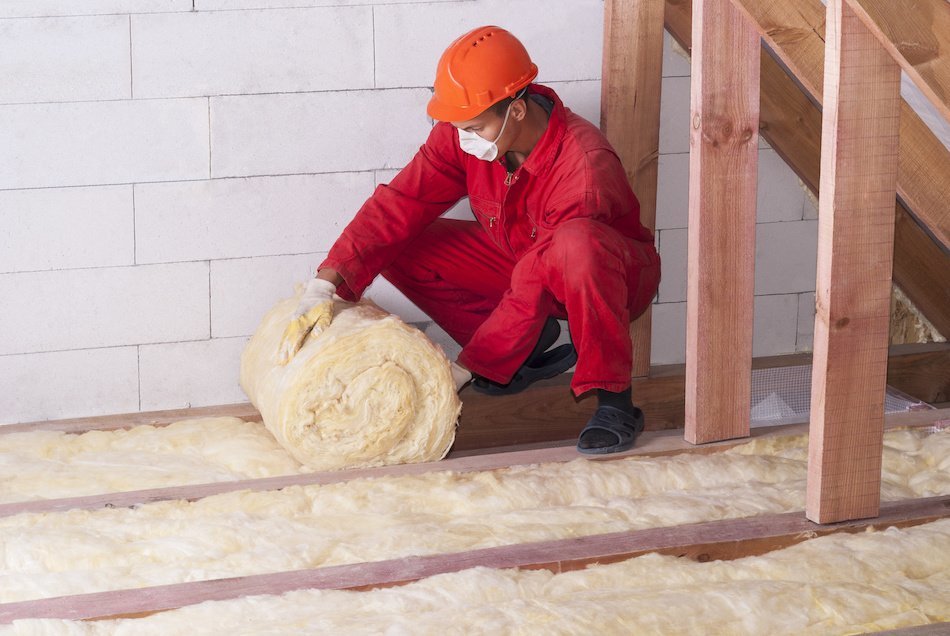Insulation Tips: Making Your Home More Energy Efficient
Posted by Gary Ashton on Monday, January 28th, 2019 at 10:28am.
 It's believed that 90 percent of homes in the United States are under insulated. Knowing how to tell if your home is under insulated and knowing what to do about it can help you take care of your property and stay more comfortable throughout the year.
It's believed that 90 percent of homes in the United States are under insulated. Knowing how to tell if your home is under insulated and knowing what to do about it can help you take care of your property and stay more comfortable throughout the year.
How Can You Tell if Your Home Needs More Insulation?
There are many ways that you can tell whether or not your home is properly insulated. First, walk around your home without shoes or socks on. Touch the floors and walls. They should be relatively warm and dry. Keep in mind that some flooring materials will feel warmer than others, so don't fret if your carpeting feels warmer than your stone tiles.
Next, walk through each room and notice the temperature. Warm spots and cold spots are an indication of uneven insulation. Stand by doors and windows and feel for drafts.
Finally, go over your utility bills. Are they exceptionally high? High utility bills are a sign that your home's HVAC system is forced to run too much to keep your house a comfortable temperature. Other signs that your home needs more insulation include:
- Frozen pipes in winter.
- Ice dams on the roof.
- Ice on interior windows in winter.
If your home exhibits any of these signs, more insulation is likely needed.
Can You Install DIY Insulation?
Like some other home improvement projects, insulation can be installed as a DIY project or by professionals. Homeowners who install their own insulation can benefit from these tips:
- Avoid compressing insulation, because compressed insulation is less effective.
- Seal air leaks outside the home before insulating inside the home.
- Pay attention to gaps in insulation, as even small gaps can make a big difference.
Before getting started, talk to an expert to learn how to insulate your home.
Understanding the Energy Ratings of Different Insulation Types
Beyond determining if your home needs new insulation, you must also select insulation with the best energy rating for each area of your home. These ratings reflect the thermal resistance of the insulation in question, revealing its ability to properly block heat flow in your climate. Each rating comes in the form of an R-value. As the R-value increases, so does the effectiveness of the insulation in blocking heat transfer. Each type of insulation has a different R-value and there are many different levels within each category.
For most types of insulation, the R-value increases with the density of the material. Loose fill insulation is the exception, however, due to the way the material compacts down within the wall cavity. Insulation contractors utilize precise formulas and calculations to determine the best amount of loose fill insulation to use for the preferred energy rating. Otherwise, you can safely select denser insulation products with a high R-value to keep heat transfer to a minimum in your home.
Each area in your home requires different R-values to properly shield the interior from outside temperatures. In the attic, for example, you may need insulation with an R-value of 49, while your walls can benefit from R-28 at the highest. Your contractor will look at the depth of the space requiring insulation, among other factors, to help you find your ideal insulation energy rating for each area in your home.
Where Are The Best Places to Install Insulation?
The best location to install insulation depends on the property. Many homeowners start with the attic, because the attic is relatively easy to insulate and is a place where heat is commonly lost. The insulation in the attic between the joists should measure at either 11 inches (if the insulation is made of fiberglass or rock wool) or 8 inches (if the insulation is made of cellulose).
In addition to attic insulation, there are several other types of insulation that are relatively easy for Spring Hill homeowners to add, including:
- Duct insulation. Duct insulation can help prevent climate-controlled air from leaking out of the home.
- Basement insulation. Basement walls are often unfinished, so adding insulation is easy for many homeowners.
- Crawl space insulation. This is best added to unventilated crawl spaces; otherwise, floor ventilation is best.
Homeowners who have no experience with insulation and construction should seek help from a professional when trying to insulate the home.
When To Insulate Your Home
The best time to insulate your home occurs before seasons with temperature extremes (like summer and winter). It's also best to insulate your home before trying to sell, because insulation can make your home more attractive to buyers. If you're thinking about selling your home and would like to boost insulation in a way that is going to attract the most buyers, contact a real estate professional. He or she can help you decide where to best install insulation and how to go about it.

Gary Ashton
The Ashton Real Estate Group of RE/MAX Advantage
The #1 RE/MAX team in the World!
